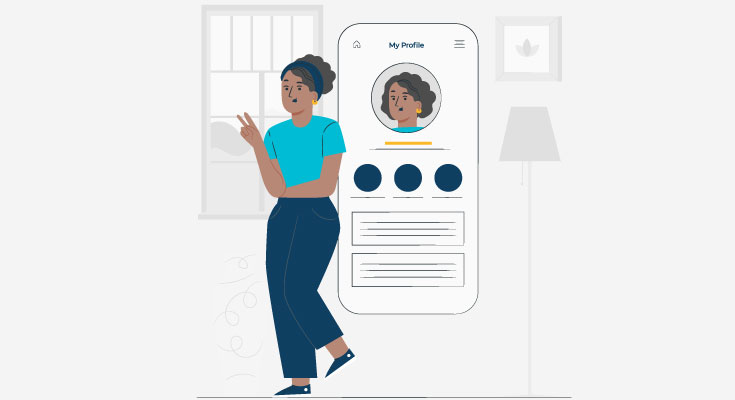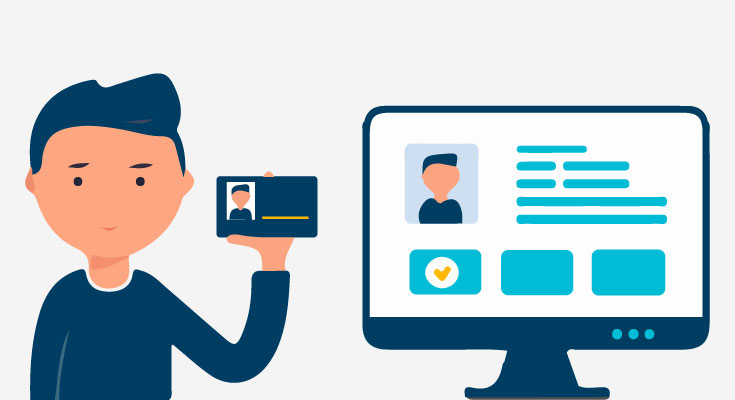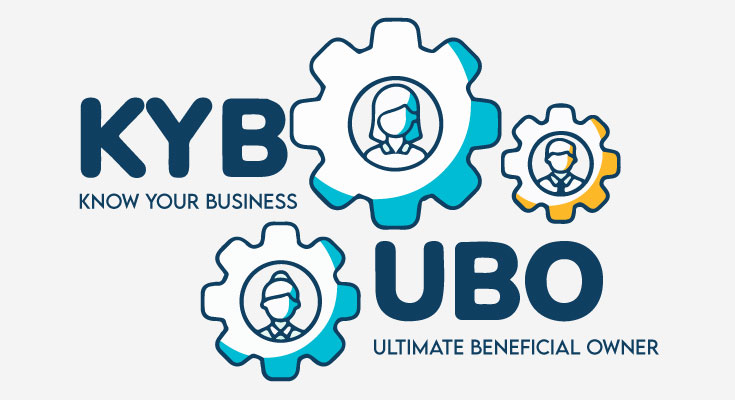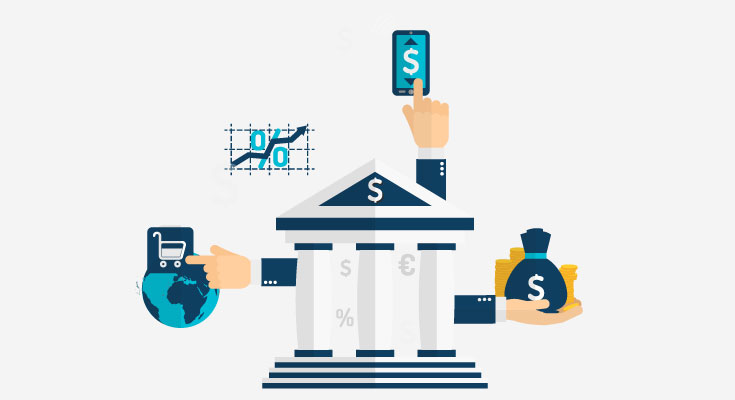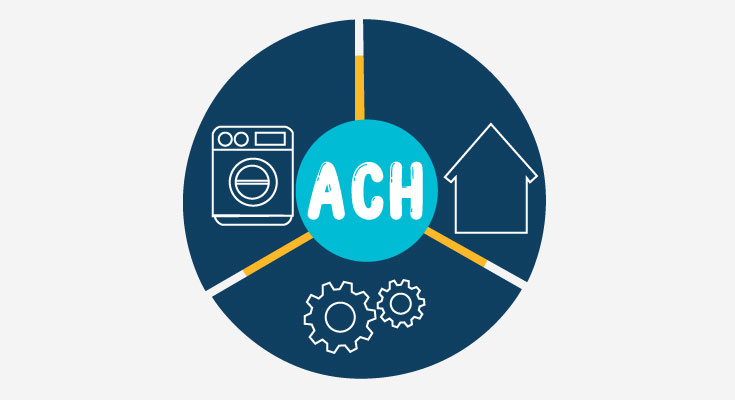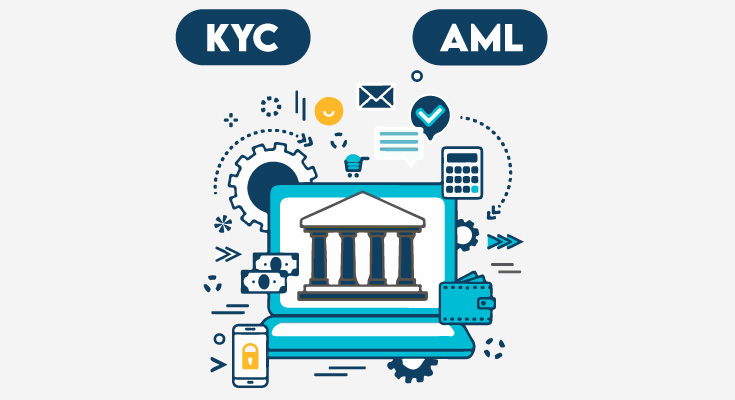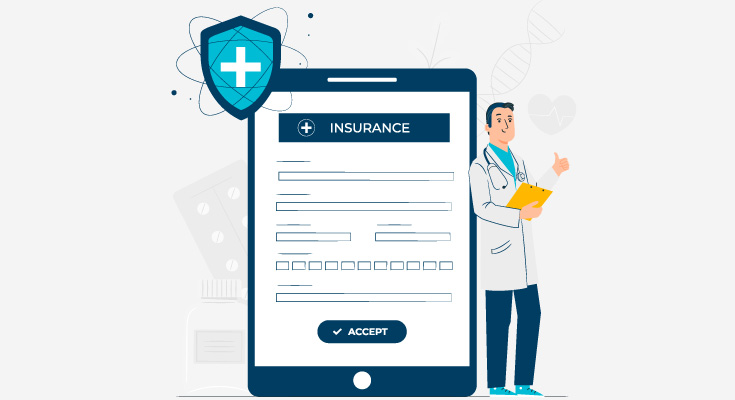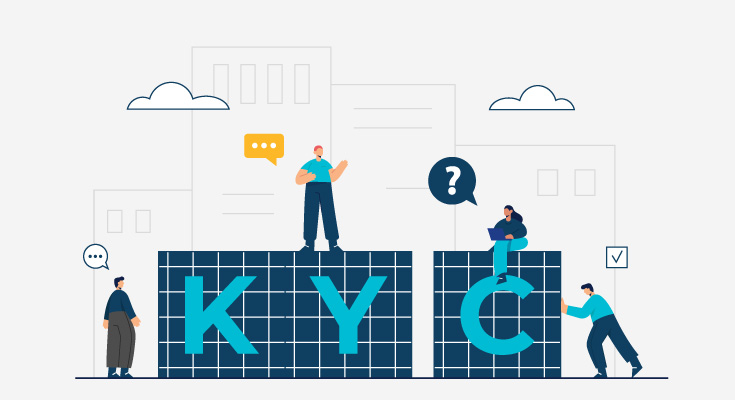Payments have come a long way over several decades. All the way back in 1974, people had to carry dimes with them to make calls from payphones, and copies were made on a mimeograph. Over time, payments have changed and so has ACH payment. The ACH payment method has improved with the help of technologies and the network keeps on providing better services to consumers and businesses. There’s a lot of rich history behind ACH transfers and what makes them one of the most preferred payment methods.
ACH is a financial tool that millions of users rely on and only a few of them understand the payment method. ACH payment network supports tens of billions of transactions within the US every year and many consumers know ACH payments by other names. Several businesses still don’t know how to boost consumer adoption of ACH payments and how to make sure all involved leverage the benefits of ACH transfer.
While the ACH payment network is a widely known and used method, millions of customers don’t know how to set up ACH payments, or how to make an ACH payment.
What is ACH Payment? Brief History
ACH (Automated Clearing House) is a network for electronically moving money between bank accounts throughout the USA. ACH is the electronic evolution of the paper check and with time and technological improvement, it became a digital process. The digital process was adopted to improve efficiency and reduce the need for human input.
As consumer needs and preferences changed in the early 1970s, banks in the US had to find new ways to keep up. The astounding growth in volume and geographic spread of checks required banks to devise new methods of handling and sharing information. The best solution that banks could think of was to turn to newly commercialized computer technology to build a payment network. Then this newly formed payment network was named “Clearing House”. If you don’t know about clearing house, it was a place where banks went at specific times to exchange checks and settle transactions.
Clearing Houses came into existence to help banks to settle checks between each other with relative ease. They facilitated the exchange of checks and calculated the net settlement amount per bank. The use of Clearing Houses makes the use of checks an open-loop payment system. Open Loop payment systems leverage intermediaries (banks, credit card providers, etc) to facilitate payments between two entities (individual accounts).
Till the end of the 1950s, magnetic ink character recognition (MICR) became a standard practice. This technology utilizes a check number, account number, and bank routing number at the bottom of a check. Ach became a natural extension of MICR technology, it was created as a way to exchange MICR directly and not extracting MICR data from checks.
ACH transactions in the beginning included:
- High-volume
- Low-risk
- Repetitive
With time, ACH payments became a norm around the entire US financial industry, becoming so standard that it’s not connected to every US demand deposit account. The popularity of ACH transactions is understandable as ACH was designed to be a low-cost service, providing banks with a profitable alternative to processing and storing paper checks.
The ACH Payments system was designed to allow corporations and consumers to reduce the use of paper-based checks and use digital methods to make payments. Users can use ACH transfers to process huge volumes of payments electronically, and with time it has become the biggest payment system in the country. In 2000, the ACH payment network processed over 4.8 billion payments, their value totaling over $12 trillion in the same period. To date, most of the payments transferred over the ACH include recurring credit card payments, interests and dividends, and other programs endorsed by the US Government.
However, the ACH payment method isn’t perfect. Compared to swift and seamless payment methods offered by FinTechs of today. Regardless of the slow processing, it is still used to process billions of payments every month.
How does ACH work?
In both Push and Pull transactions, ACH works in a similar way:
1. A bank originates the transaction. This bank is denoted with the term “ODFI” Originating Depository Financial Institution. Banks then send ACH entries in batches, working on a fixed schedule.
2. An ACH operator (The Federal Reserve or The Clearing House) puts the entries into deposits and payments.
3. Once the entries sent by banks are sorted, the ACH operator sends legit entries to RFDI (Receiving Depository Financial Institution).
4. RDFI receives the transactions and debits or credits the amount according to the payment.
5. Money is settled among banks at the end of the day.
Since 2001, ACH payments have been available for customers online. In 2015, NACHA (the organization regulating the ACH network) created single-day ACH transactions. Before that, ACH transactions used to take 2 days – to 1 week depending on the banks. While single-day ACH transactions have improved the transactions by a lot, they don’t offer real-time payments.
What is NACHA?
Commercial ACH payments rely on a set of rules and regulations set forth by the National Automated Clearing House Association (NACHA). While the Treasury payments are governed by Federal regulations that are built upon the NACHA regulations.
NACHA’s membership is composed of representatives of the 40 regional ACH Associations in the USA. All the institutions in the ACH associations have to be depository institutions, commercial banks, savings banks, savings and loan associations, U.S. branches of foreign banks, Edge Act corporations, and credit unions. Today, over 25,000 depository institutions are participating in the ACH system.
Role of Federal Reserve and Private Sector AC Operators
The Federal Reserve Banks have been authorized by the regional ACH associations to operate automated clearinghouse facilities to settle for items they process. The Federal Reserve handles almost 75% of all the items in the ACH payment network in the United States.
Some ACH businesses have designated private sector operators to process the item exchanges between their members.
Social Security Tests Direct Deposit
The Social Security Administration began testing DD (Direct Deposits) in 1975. While that was just an initial choice, no one expected that 99% of SSA payments will use Direct Deposits.
While government payments gave ACH a big starting boost, the uses of ACH payments have grown over the years. Ever write a check and wonder why you never saw it getting canceled? All thanks to the ACH payment network, your check was converted electronically. The ACH payment method was considered innovative at the time, and it definitely transformed the financial industry. Due to ACH, no one gets back a canceled check, regardless of how the check was processed.
Uses of ACH Payment Network?
An ACH transaction informs member institutions (Financial institutions) to debit/credit accounts as they’re present on a physical check. Common information around check include:
- Account number
- Routing number
It’s also why businesses ask for a canceled check for setting up the payroll for a newly hired employee. Voided/canceled checks provide banks with necessary information.
What makes the ACH payment process confusing is that they’re also called by several other names. ACH transfers are commonly called “eChecks”, “direct debit”, “automatic withdrawal”, “ACH credit & debit”, and others. While their names may be different, they’re all the same process. Here’s everything you can do with an ACH payment process:
- Consumers can send funds between banks
- Employers can use ACH transfers to pay their employees
- Customers pay service providers such as Internet providers, utility bills, and so on.
- Taxpayers pay taxes using IRS
- Businesses pay suppliers
The ACH payment method isn’t the only method to move money around, and it may not be the most efficient process, but it’s still the biggest process. In 2020, over $62 trillion worth of payments were facilitated via the ACH payment network.
Types of ACH Payments
All ACH transactions fall into one of the two categories debit (pull) or credit (push). In the ACH payment debit process, an organization could be “pulling” money from a customer account for an automatic bill payment. In an ACH credit transaction, an organization could be “pushing” money to your employees “pushing” money to an employee’s account to pay wages.
As one person’s credit is another person’s debit, the naming helps a business identity which process to set in an ACH transfer. An employer usually asks the ACH network to push money out of their accounts to send money to an employee’s accounts. If the employee has initiated the request, it would be an ACH debit transaction even though it will be the one who received the funds.
Who Runs the ACH Network?
NACHA, which stands for National Automated Clearing House Association, is the primary rule-making entity for ACH-using financial institutions in America. However, the complete ACH Network is an amalgamation of two systems run by different operators:
- The Electronic Payment Network (EPN), is run by the “Clearing House” (an association made up of 24 banks)
- FedACH, is run by the Federal Reserve banks to handle ACH transactions on behalf of the federal government.
To understand this better, you can think of it as a partnership between two delivery companies that had their own zones and routes. Government financial institutions are serviced by FedACH, and private banks are supported by EPN.
So NACHA, working with several government entities, makes up the rules, and then both the operators work together to route and deliver all ACH messages accordingly.
How Long Does an ACH Payment Take to Process?
As we mentioned above, ACH transfers are the most used method of sending and receiving money in the USA. But the time taken for finishing the payments vary, it can take anything from a few hours to a few business days. The time is based on:
- When the day the transaction was initiated
- Whether the transaction returns an error message before the target settlement date because of incorrect information or insufficient funds.
- Whether the payment originator paid for the “same-day ACH Payment” service.
Now that ACH messages are being delivered up to 5 times per business day, the default results are a bit faster. And the ACH payment network can easily accommodate same-day payment processing. The use of same-day ACH payments has been pretty low compared to general payments, which is the opposite of what everyone expected. In 2020, only $460 billion worth of payments were same-day transactions. That’s roughly 0.7% of all ACH transfers.
This slow adoption of same-day ACH payment can be credited to the additional cost, and also the fact that faster processing doesn’t mean faster payment settlement. Unlike a wire transfer, ACH transactions are recallable but the timelines regarding the payment returns are extremely complicated. So, if you didn’t get any notification, you can assume that the payment process is going just fine. Consumers have up to 60 days from when the statement containing the unauthorized transaction was transmitted to consumers.
Depending on a given institution’s standard payment practices, and their risk level assessment, the payment process may be delayed until the maximum deadline. It doesn’t matter if the receiving institutions already have the details in hand.
ACH Payment vs Wire Transfer
ACH transfers and wire transfers both help in moving funds from one bank account to another one. They’re almost identical at first glance, but once you dive in deeper there are several differences. If you’re researching ACH payment vs wire transfer, then understanding the difference can help you out a lot.
During ACH transfers, information such as account numbers and routing numbers are sent in a batch to the automated clearinghouse, which then clears the payments and sends them to the bank. The ACH payment network acts as a middleman when it comes to payment clearing.
Wire transfer on the other hand transfers funds from one account to another, but instead of the ACH, banks act as a middleman.
1. Speed Comparison: ACH Payment vs Wire Transfer
Depending on different details, an ACH transfer can take two to three business days to complete. They take more time because several payments are processed by the banks at the same time.
Wire transfers send funds almost instantly. The funds aren’t left on hold and the receiving entity can access the funds right away.
2. Cost: ACH Payment vs Wire Transfer
Some ACH payment providers have a fixed flat fee ranging from $0.20 to $1.50 per transaction. Businesses may also have to pay a separate fee ranging from $5 – $30 per month just for using the ACH service. There are some other charges such as ($2 – $5 per return), reversal/chargeback fees ($5 – $25 per incident), and batch fees of less than $1.00.
The good news is that ACH fees are still lower than other payment methods. Typically, ACH transactions often cost a business under one dollar per transaction based on transaction volume and potential risks. This is what makes ACH transactions an attractive choice for most users. Plus, the more ACH transactions you do, the less you have to pay per transaction.
Wire transfer, on the other hand, can cost both the sender and the receiver. Many financial institutions charge $10 to $35 to send, and smaller institutions may also charge a fee to receive a wire transfer. For high-end payments, these costs can add up to $55 when combining all the fees, and sending money internationally can cost even more.
3. Payment Security: ACH Payment vs Wire Transfer
Businesses and individuals need to send and receive money securely. ACH transfers are safer for the senders. Unlike most wire transfers, funds can be reversed if any fraud or payment error is detected.
Wire transfers have a few disadvantages for the recipient. They’re a full step above cashier’s checks, which are pretty easy to fake. When you receive a wire transfer, you can access and use the money instantly.
For senders, there’s a lot more risk involved. It’s important to know or confirm the person or account you’re sending money to, if you make a mistake and send money to the wrong party, they can withdraw those funds. Wire transfers are only insecure if you make a mistake in the sender’s information, or if someone has scammed you into sending money.
Benefits of ACH Transactions
The reason why the ACH payment method is so famous in the USA is that it offers 3 main benefits:
1. Cost-Effective
For an organization that uses ACH payments, ACH payment fees can range from a few cents to a few dollars, based on transaction size and volume. Compared to domestic wire transfers, ACH payments cost almost next to nothing.
2. Easily Repeatable Payments
ACH payments are repeatable. Credit cards and debit cards expire or get stolen. On average the US checking account is 14 years old, so you need to link your account just once to the ACH payment network. This makes ACH a great solution that reduces the transaction risk with each wire transfer involving the same accounts.
3. They’re Convenient
Older methods of sending and receiving money aren’t ideal and they offer a poor customer experience. Handling paper checks can be labor-intensive for everyone, wire fees aren’t ideal for the receiver, and credit cards require a lot of data inputs. And we can all agree that cash is a security risk that also requires trips to banks and standing in queues. ACH transfers are convenient and reduce the level of risk and hassle for users.
Limitations of ACH Payments
ACH payment network isn’t perfect, and here are the limitations of using ACH payments:
1. Speed
Default ACH transfers can take multiple business days to process, and even same-day ACH isn’t exactly same-day. This can leave parties with difficult decisions regarding withdrawals, shipping products, or honoring service contracts during the interviewing time. With slow processing, you can also have confusing balances, where consumers can forget about pending debit and end up with overdrafts and end up paying other charges.
2. Risk
As receiving entities won’t know for hours or days after a transaction has cleared, scammers and fraudsters can take advantage of this delay. This particular risk has eliminated ACH’s adoption for single-transaction uses and has also forced banks to place limits on how much money consumers can transfer.
How to Set Up ACH Payment?
Here’s how to set up ACH payment for your money transfer needs:
1. Set Up Your Account
Regardless of the industry, you’re in, ACH payments can increase revenue. ACH payments come with lower transaction fees compared to wire. Before you can set up an ACH payment account, you’ll need to choose a payment processor which is the next step.
2. Choose an ACH Payment Processor
You should contact your bank to figure out the ACH payment processing fees. It may be more efficient for you to connect with an ACH operator or payables automation solution. Comparing the details of features and the workflow from 3-4 different providers can help you choose the ideal ACH payment processor according to your needs.
3. Finish the Paperwork
You’ll learn a lot about ACH payment processing when you fill out the necessary paperwork. ACH payments work by sending money from one account to another electronically. If you’re using wire transfer up until now, you can save a lot of money by switching to the ACH payment method.
Visit your bank and complete the paperwork as directed by them.
4. Understand the Types of ACH Payments
To learn how to set up ACH payments, you’ll need to learn about the types of ACH payments. There are 4 basic types of ACH transactions:
- PDD: this means there has been written permission from the payer to have funds debited from their accounts. Writing a check won’t qualify as permission when conducting a PDD transaction.
- WEB: When the payer permits the internet to have the funds debited electronically, it’s known as a WEB ACH transfer. Specific authorization language is used in the permission process, and this language should be understood by the payer.
- TEL: With TEL ACH transactions, the payer provides information over the phone for money to be debited from their account. When a TEL ACH payment is processed, the phone call is recorded for verification.
- ARC and BOC: In ARC and BOC ACH transactions, a written check acts as permission however, the payer has to be notified that the paper check can be converted for conducting an ACH transaction.
5. Choose the Right Entry Class
Businesses have to familiarize themselves with several entry classes before processing ACH Payments. Most of the time it’s ideal to choose a service provider who will help you in processing the payment correctly.
There are more than a dozen entry classes and you need to make sure to choose the one that suits your spending habits.
6. Carefully Go Through ACH Payment Terms and Conditions
It’s essential that you go through the terms and conditions carefully. If you choose to sign up with an ACH payment provider, then you’ll get a detailed terms and conditions document that will help you understand almost everything. It will also detail the steps you can take to learn more and it will answer all the questions.
How to Make An ACH Payment?
Contrary to popular belief, it is pretty easy to learn how to make an ACH payment. Here are all the steps you need to follow for an ACH transfer.
1. Gather Crucial Information for ACH Transfer
To make a transfer, you’ll need to provide your name, your routing/ABA number, account number, account type, and transaction amount. If your account has check-writing privileges, you should be able to get the account and routing number on the check. Besides bank accounts, credit unions can also be used for ACH payments.
2. Choose Between ACH Debit and ACH Credit
To execute the correct payment, you’ll need to differentiate between ACH debit and ACH credit.
ACH Credit is used to pay bills, with these transactions you provide your financial institutions with the authorization to pay a utility company or a loan provider.
With ACH debit, you establish the transaction with the payee. In this transaction type, you’ll submit your payment details such as account and routing numbers to the payee. Compared to ACH credit, ACH debit poses a higher level of risk.
Regardless of the type of payment you choose, you get the same level of convenience and cost-effectiveness.
3. Finish the ACH Transfer
Before you go through the final process and transfer funds using ACH, you have to complete some paperwork. Now, most of that paperwork has gone digital and it provides a greater level of convenience. Some institutions may still ask you to fill out the physical paperwork, either way, these are the steps you need to follow:
- Link account. This is an essential step and it can be completed fairly easily. To complete this step, you’ll need to fulfill the ACH instructions mentioned to the financial institutions who’ll be handling the transaction.
- Clarify if the transaction will be a credit or debit to the account where the transaction will initiate.
- Enter the payment amount.
- Specify the payment date. Most financial institutions will allow you to post-date a payment.
Final Take: Understand ACH Payment
If you’re looking for a solution to move funds from one bank account to another one electronically, then the Automated Clearing House is an ideal option. This is also the case if you’re on a tight budget and want to keep costs as low as possible. And with the introduction of same-day transfers, the speed, and convenience of payments have been improved.
